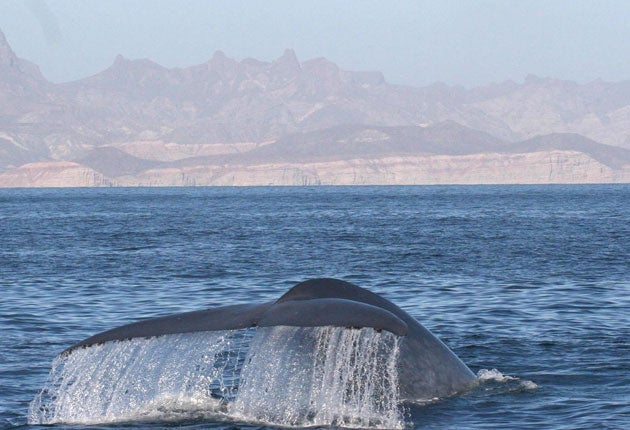The thrills and spills of whale watching
Few wildlife experiences top seeing a giant whale surge out of the water just in front of you, report Michael McCarthy and Josephine Forster

There are few wildlife experiences like it – to see dolphins, or even an adult humpbacked whale, surge out of the water next to your boat. Children, in particular, are thrilled – and whale-watching, once thought of as a novelty, is becoming mainstream, and growing in popularity around the coasts of Britain.
The delight of seeing wild marine mammals up close is drawing more holidaymakers to whale-watching excursions, in the West Country, Wales and especially in Scotland, where in 2008, the last year for which there are figures, nearly a quarter of a million people took boat trips to search for cetaceans – the generic term for whales, dolphins and porpoises.
We've caught on rather late – in the USA, nearly five million holidaymakers annually take whale-watching trips, while in Australia about 1.6m, and in Canada about 1.2m visitors a year set out on cetacean watch. But we're catching up. More and more seaside resorts, whose small-boat skippers once offered only fishing trips or tours round the bay, are setting out in search of more majestic sea creatures,
Bottlenose dolphins, with two resident populations in waters: Cardigan Bay in Wales and the Moray Firth in Scotland, are the most commonly seen cetaceans around our coasts, followed by more diminutive harbour porpoises, and minke whales, which are the smallest of the great whales.
But there is often a chance to see other dolphin species, such as common dolphins, which have a broad pale stripe along their side, and more of the great whales, such as the humpback with its tremendous "breaching" or leaping clear of the water, while the world's second largest fish, the huge basking shark, can frequently be seen in the summer months.
Perhaps the greatest prize is to see a pod of killer whales or orcas, the black-and-white hunters which are the largest members of the dolphin family. Chances of seeing them improve as you go north, with perhaps the best chance in Northern Scotland.
"Whale watching is a huge industry – around 13 million people enjoy a trip each year in 120 countries, generating revenues of over $2 billion," says Vanessa Williams-Grey of the Whale and Dolphin Conservation Society.
It certainly makes a change from the usual sand castles and ice cream.
Subscribe to Independent Premium to bookmark this article
Want to bookmark your favourite articles and stories to read or reference later? Start your Independent Premium subscription today.

Join our commenting forum
Join thought-provoking conversations, follow other Independent readers and see their replies